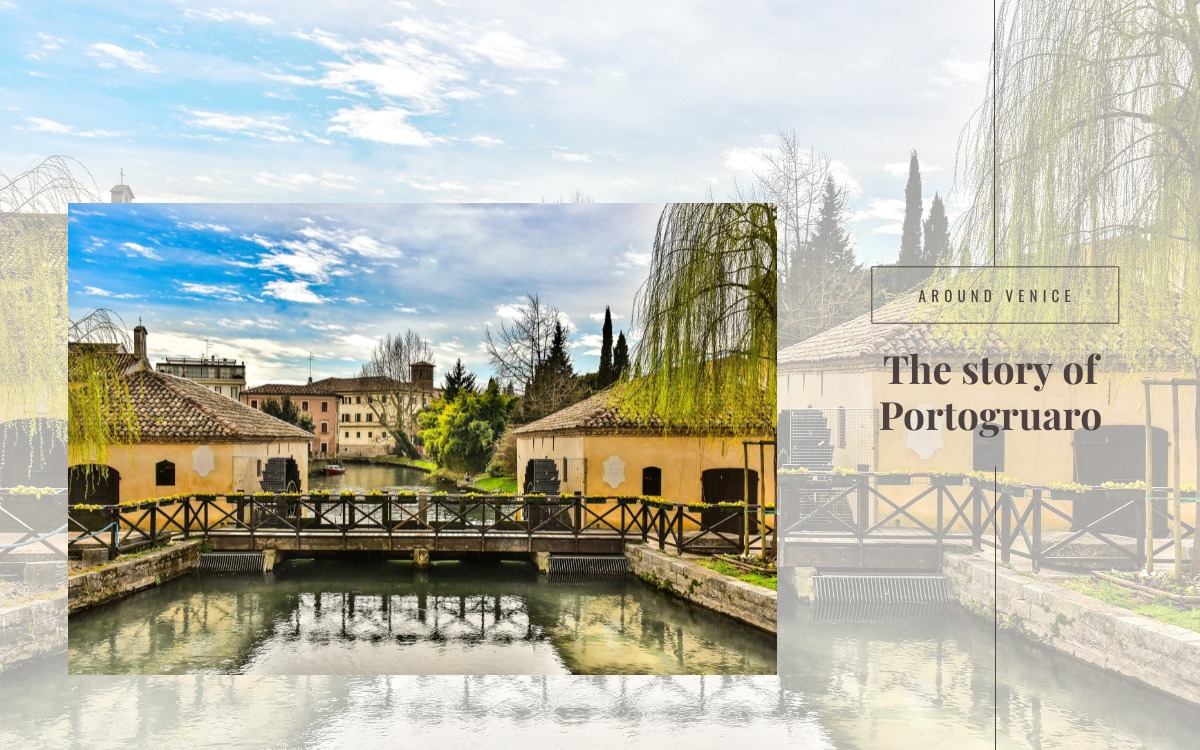Italy offers a wealth of charming localities lying off the well-beaten tourist tracks which usually take in nearby, more famous sites.
This is most certainly the case with Portogruaro, a pleasant and people-friendly jewel of town, full of picturesque views and a rich historical and artistic heritage often overlooked by the tourists that throng the streets, bridges and squares of magnificent Venice, just 74 km away.
Yet the beauty of this Venetian town truly merit discovery: it is easily reachable and if you want to avoid using the car, you can take advantage of the transport companies that connect it very well to many other places of interest throughout Eastern Veneto.
The story of Portogruaro
The delightful town of Portogruaro in the Eastern Veneto lies on the banks of the Lemena river in an area once occupied entirely by lagoon areas: being on the border with Friuli Venezia Giulia, Portogruaro has absorbed the culture and styles of both the Veneto and Friuli regions.
Before visiting Portogruaro, as for any new place, knowing some of its history will help you appreciate each monument, church, and palace.
Legend has it that Portogruaro rose from the ashes of the Roman city of Iulia Concordia (today’s Concordia Sagittaria), which was devastated by Attila’s Huns in the 5th century. It seems that the surviving fishermen transported the remaining stones further north, via the Lemene, to a place that was more protected from flooding.
From the historical point of view, however, the first we hear of Portogruaro is in 1140 when the bishop of Concordia, Gervino, granted a parcel of land to merchants and the portolans supervising the port traffic just south of the Covra Bridge to construct a port and some housing.
The little settlement soon grew and developed thanks to the nearby Lemene River, which was an efficient communication route between the hinterland and the coast: mills and even a castle followed, as noted in Pope Urban III’s 1186 papal bull.
By the twelfth century Portogruaro boasted a Municipal Palace, a moated wall and even a Lazaretto to accommodate lepers, not to mention a directly elected podestà (or mayor), albeit with the prior consent of the bishop of Concordia.
The peak period of Portogruaro’s splendour unquestionably coincided with the dominion of the Serenissima Republic of Venice, made official with the 1420 document “The Privilege of Portogruaro“, which detailed all the rights and prerogatives granted to its citizens. This period saw the construction of the Fondaco del Commercio, the Villa Comunale designed by Il Bergamasco, and above all the bridges that crossed the Lemene river, almost all imprinted with the symbol of the city and the podestà. A number of Portogruaro’s bridges no longer exist today, destroyed by the Austrian fury during the First World War, including the exemplary Ponte della Stretta and Ponte del Rastrello.
From the fall of the Serenissima to annexation to the Kingdom of Italy
With the “Memoranda on the Fall of the Venetian Domination“, or the cessation of dominion of the Serenissima over Portogruaro in 1797, the French arrived in the town and with them the establishment of the provisional Municipality.
The foreign presence turned out to be a real drain for the citizens: the Church even went so far as to sell all the silverware contained in Portogruaro’s churches. The scarring on many of the city’s bridge pillars are a reminder of the French effort to erase the imprinted Venetian lions, a memory of Venetian power.
Following the Treaty of Campoformido, Portogruaro literally found itself divided in two, with the Austrians on the left bank of the Lemene river while the French resisted on the opposite shore. With the fall of Napoleon, the Austrians imposed themselves on the territory of Portogruaro until 1866 when, following the Austro-Prussian war, the town and the entire Veneto region were annexed to the Kingdom of Italy.
Now that you’re briefed on Portoguraro’s intense history, you can get to know its symbolic monuments, from the 13th century Gothic-style Town Hall complete with Ghibelline battlements to the leaning bell tower of the Church of S. Andrea and the 15th century mills on the Lemene river.




